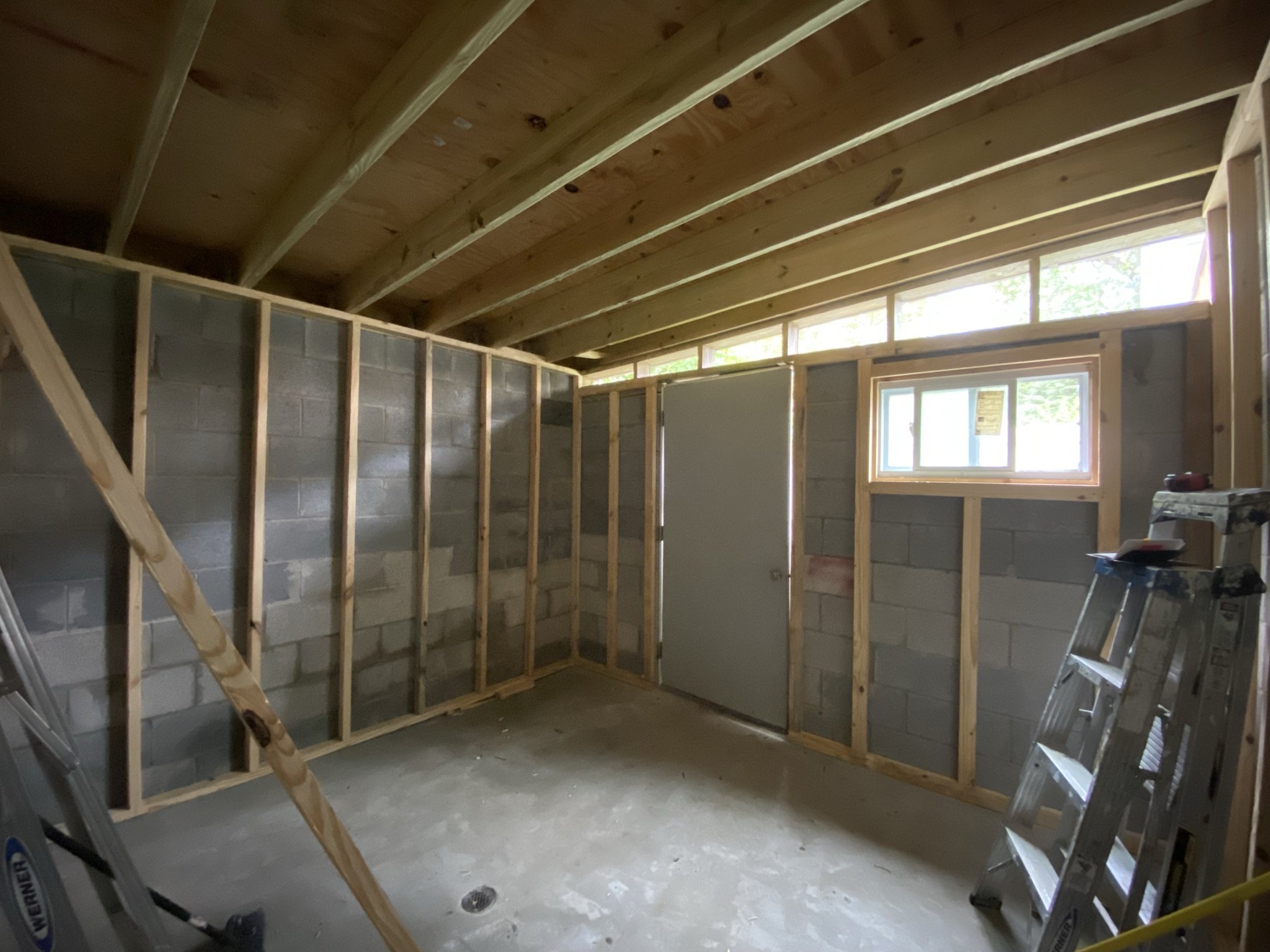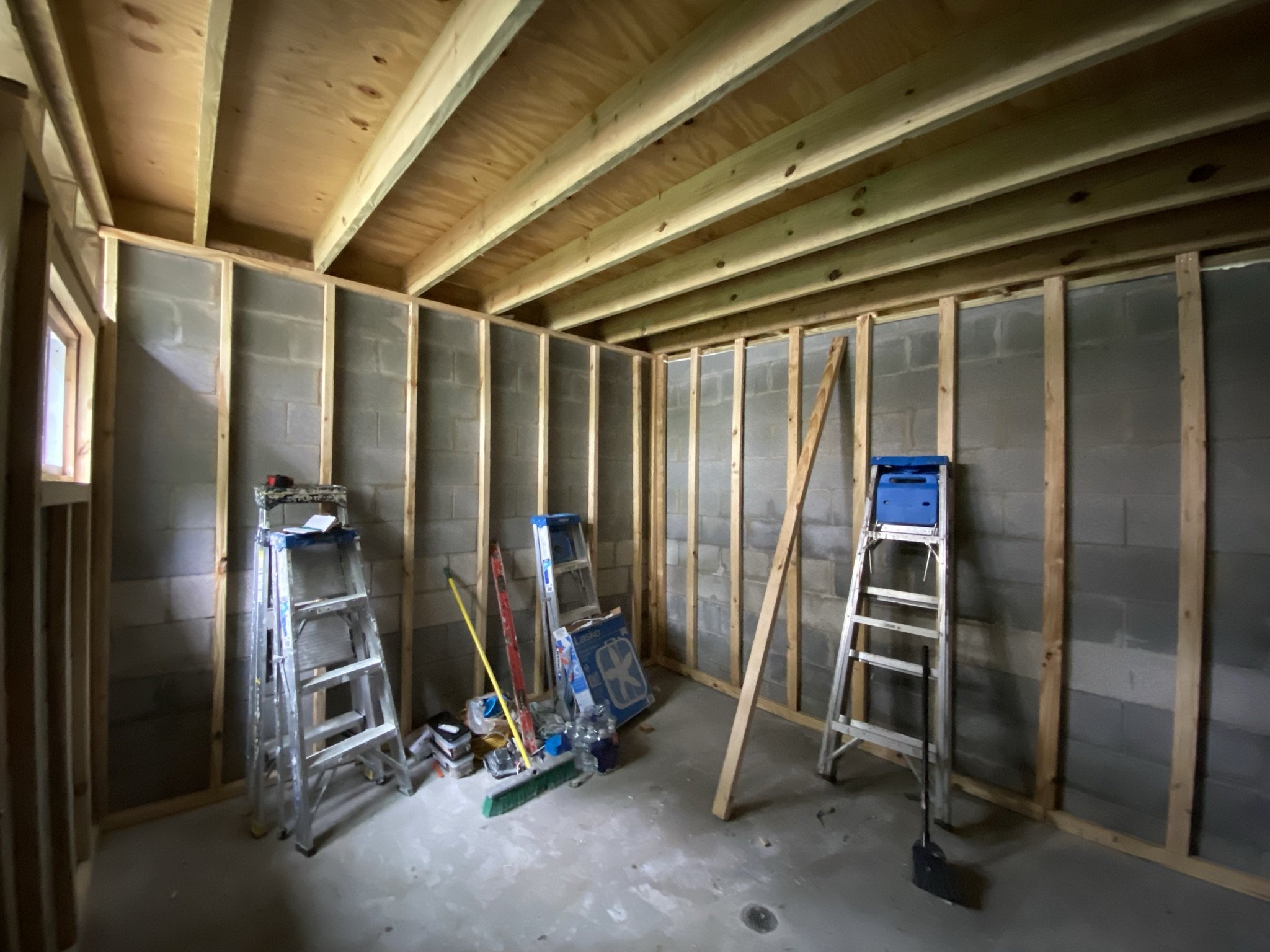The picture above is a small project I recently worked on and the final option that my smart client picked.
As you can see, the design was simple, almost dry. But why did I say my client is smart? That is because she asked these TWO questions:
Why was this roof designed with an assembly thickness of 9 inches?
a. Location vs. Climate Zone
No matter how tiny your structure is, the first thing I recommend checking is the local climate zone. Since each place is different, so is their system requirement. The building code (IRC table R301.2 ) also tells us that the local jurisdiction shall establish geographic design criteria, such as wind speed, ground snow load, or seismic category.
In my client's scenario, this small project is located in climate zone 4A, with 30 pounds per square foot of snow load and 115 mph wind speed at an "exposure B" neighborhood. (1)
b. Snow load vs. Wood Framing
The concerns of a roof assembly are related to the snow load requirement in your region. As mentioned above, the required design snow load is 30 pounds per square foot. Then, we could look up Table R802.4.1(3) for the optimal spans for the rafters.
As you can see from the table above, Both Douglas Fir #2 and #3 would be suitable for the roof structure perimeter. Yet 2x8 Douglas fir #2 is a more economical choice.
If you have a conventional textbook, the table will look like this. Above page shows condition under “Live Load=40 lbs/sf”. (Image via “Building Construction Illustrated”/ Francis D.K.Ching )
Once we have these numbers in mind, the next step is to look at its wood framing layout. Since the shape of this shed is close to a square shape, there are two possibilities to frame the roof.
Though this single-roof plane roof is 16 feet by 12 feet, the rafter only spans 12 feet; therefore, one efficient framing would use 2x8 rafters to assemble the roof frame. With the plywood (minimum of 19/32") to enclose the top and bottom side of the frame, the total thickness of this roof assembly is about 9–10 inches.
Why use a corrugated metal roof?
Our smart client asked this question during our design charrette.
The final roof material was a 10 ft corrugated galvanized steel panel. The selection of this reflective material has to do with the idea of "Cool Roof." And this is how a "cool roof" works.
a. Heat Island Effect vs. Material Attributes
Three main effects happen when sun rays hit the roof surface:
1. Solar Reflectance: Solar reflectance, or "albedo," is the percentage of solar energy reflected by a surface. Generally speaking, the darker material has a low albedo (close to 0), and the lighter material has a higher albedo (close to 1).
2. Thermal Emittance: a material's thermal emittance determines how much heat it will radiate per unit area at a given temperature. The emissivity value often determines a material's contribution to an urban heat island.
It is an attribute tied to the "type" of a surface rather than the surface's "color." For example, a highly polished surface, such as a mirror or shiny steel, has a similar low emissivity value. On the other hand, even with a different color, the same type of surface will have the same emissivity. (For example, a tan concrete paver and a charcoal concrete paver.) A thermal image from an infrared camera can quickly tell this attribute.
3. Heat Absorption: Some heat is absorbed by the roof and transferred to the space below. The "Heat Island Effect" is a phenomenon that often occurs in an urbanized area. When a built environment absorbs and re-emits the sun's heat more than the natural landscape, we experience higher-than-average temperatures.
b. Cool Roof vs. SR/SRI
One way to defeat unwanted temperature rises in our environment is to use light-colored or reflective surfaces. These materials reflect more solar energy, emitting more thermal radiation into the atmosphere and absorbing less heat into the building. It also slows the formation of ground-level ozone and smog.
If you want to know whether your product is really "cool," then make sure you check its SR and SRI values.
SR means Solar Reflectance. It is a measurement range between 0–1, with 1 representing 100% reflective with no absorption. Many lighter tones of material are designed with an "energy star" label available throughout the U.S. To qualify for this "Energy Star" label, their initial solar reflectance SR must be greater or equal to 0.25.
SRI means Solar Reflectance Index. It is calculated using the aged solar reflectance and thermal emittance measurement of the roof surface material. It ranges from 0–100, with 100 representing maximum achievable solar reflectance. This index is used to indicate how hot the roofing material is likely to become when exposed to the sun. The lower the SRI value, the hotter the roofing material is expected under the sun. Typically, higher SRI also runs into lighter hues, such as white, light grey, light tan. When using the LEED reference guide, the SRI value is required to achieve credits.
Different slope will achieve various SRI value. ( information via LEED reference guide)
And finally… a sneak peek of project progress inside…
Notes and references:
When planning a building, there are three types of Exposure Categories: B, C and D. Exposure B means the building or structures are situated in urban or suburban areas. Many of them closely space obstructions. Generally speaking, if your average roof height is less than 30 feet and also located at Exposure B zone, then you don’t need additional coefficient to adjust your structure calculation. (2018 IRC Table R301.2 (3))
An added living space is also referring to as a “conditioned space”-where temperature and humidity are controlled. Insulating a place offers the ability to have a comfortable living space that allows you to spend long hours inside.
You can also find your local climate region by viewing the Guide to Determining Climate Region by County from U.S. Department of Energy.
Here is a short clip from the Department of Energy if you are interested in applying "Cool Roof" concept for your place.
Here is the video by Infrared training center that I found very useful to understand what is “emissivity“.
Last update: 3/04/2022










